38 compound microscope parts name
Compound Light Microscope: Everything You Need to Know Depending on how sophisticated the microscope is, the more (and better) parts it will have. But, as with all light microscopes, the most basic parts of a compound microscope are the lenses and the eyepiece. Objective lenses A compound microscope will normally have around three to five objective lenses, each with a magnification of 4x to 100x. What is a Compound Microscope? - New York Microscope Company Sep 16, 2017 · A " biological microscope " is one kind of a compound microscope. Sometimes other names are used for biological microscopes too. If you hear either of the terms "brightfield microscope" or "transmitted light microscope," it is referring to the same thing. There are other types of compound microscopes in common use too.
Name the various parts of a compound microscope. Name the various parts of a compound microscope. Question asked by: Ranbir. Ranbir 24. 0 Answers Active; Voted; Newest; Oldest; Write your answer. Register or Login. Welcome to BiologyDiscussion! Our mission is to provide an online platform to help students to share notes in Biology. ... Name the types of nitrogenous bases present in the RNA. 0 ...
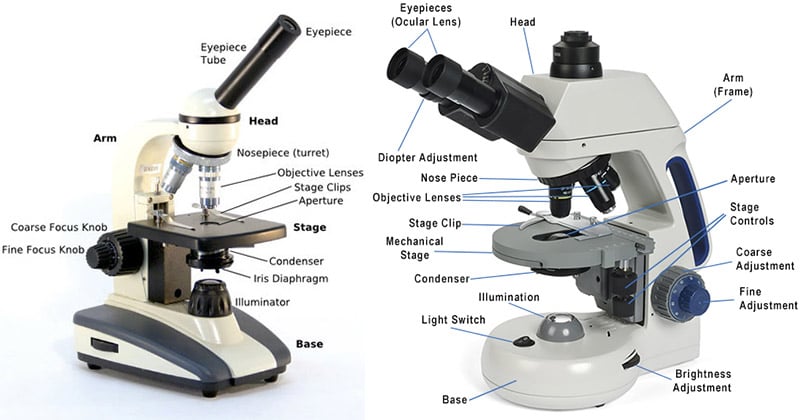
Compound microscope parts name
Microscope Parts and Functions Diopter Adjustment: Useful as a means to change focus on one eyepiece so as to correct for any difference in vision between your two eyes. Body tube (Head): The body tube connects the eyepiece to the objective lenses. Arm: The arm connects the body tube to the base of the microscope. Compound Microscope – Diagram (Parts labelled), Principle and … Web03.02.2022 · The three structural components include: 1. Head – This is the upper part of the microscope that houses the optical parts 2. Arm – This part connects the head with the base and provides stability to the microscope. Arm is used to carry the microscope around 3. Base – Base is on which the microscope rests and the base houses the illuminator … Parts of Compound Microscope (With Diagram) - Biology Discussion ADVERTISEMENTS: A compound microscope consists of three main parts: 1. Objective Lens 2. Eye Piece 3. Condensers. Part # 1. Objective Lens: The chief characteristics of the objective lens are: (a) To gather the light rays coming any point to the object, ADVERTISEMENTS: (b) To unite the light in a point of image, (c) To […]
Compound microscope parts name. Parts of a microscope with functions and labeled diagram - Microbe Notes Q. List down the 18 parts of a Microscope. 1. Ocular Lens (Eye Piece) 2. Diopter Adjustment 3. Head 4. Nose Piece 5. Objective Lens 6. Arm (Carrying Handle) 7. Mechanical Stage 8. Stage Clip 9. Aperture 10. Diaphragm 11. Condenser 12. Coarse Adjustment 13. Fine Adjustment 14. Illuminator (Light Source) 15. Stage Controls 16. Base 17. Brightness Adjustment 18. Light Switch A compound Microscope: Parts and their Functions - Quizlet holds slides in place. Lamp/ Mirror. shines light through the sample. Diaphragm. controls the amount of light that passes through sample. Coarse Adjustment. the large knob which moves the body tube to produce large changes in focus. Fine Adjustment. the small knob which moves the body tube to produce small changes in focus. UD Virtual Compound Microscope - University of Delaware ©University of Delaware. This work is licensed under a Creative Commons Attribution-NonCommercial-NoDerivs 2.5 License.Creative Commons Attribution-NonCommercial-NoDerivs 2 Parts of Stereo Microscope (Dissecting microscope) – labeled … WebThe difference between Compound and Stereo (Dissecting) Microscope. Unlike a compound microscope that can only see a very thin specimen, stereo microscopes can be used for viewing almost anything you can fit under them. However, stereo microscopes offer lower magnification, typically 5x-50x, comparing to compound microscopes.
Compound Microscope: Parts of Compound Microscope - BYJUS Optical parts (A) Mechanical Parts of a Compound Microscope. 1. Foot or base. It is a U-shaped structure and supports the entire weight of the compound microscope. 2. Pillar. It is a vertical projection. This stands by resting on the base and supports the stage. 3. Arm. The entire microscope is handled by a strong and curved structure known as the arm. 4. Stage Compound Microscope Parts Compound Microscope Parts Eyepiece or Ocular . Typically, standard eyepieces have a magnifying power of 10x. Optional eyepieces of varying powers... Eyepiece Tube . Binocular microscope heads typically incorporate a diopter adjustment ring that allows for the possible... Objective Lenses . They ... Parts of the Compound Microscope - Houston Community College Parts of the Compound Microscope Use Figure 2 as a guide to locate the major parts of the compound microscope. a. Base: The bottom, flat part that supports the microscope. b. Arm: The straight or curved vertical part that connects the base to the upper portion. c. Body Tube: Extends from the arm and contains the ocular lens and the rotating Compound Microscope Parts, Functions, and Labeled Diagram Parts of a Compound Microscope Eyepiece (ocular lens) with or without Pointer: The part that is looked through at the top of the compound microscope. Monocular or Binocular Head: Structural support that holds & connects the eyepieces to the objective lenses. Arm: Supports the microscope head and ...
Compound Microscope - Types, Parts, Diagram, Functions and Uses A compound microscope has two convex lenses; an objective lens and eye piece. The objective lens is placed towards the object and the eyepiece is the lens towards our eye. Both eyepiece and objective lenses have a short focal length and fitted at the free ends of two sliding tubes. (4, 5, and 6) Compound microscope parts and magnification Parts of Stereo Microscope (Dissecting microscope) – labeled ... If you would like to learn optical components of a compound microscope, please visit Compound Microscope Parts – Labeled Diagram and their Functions, and this article. How to use a stereo (dissecting) microscope. Follow these steps to put your stereo microscopes in work: 1. Set your microscope on a tabletop or other flat sturdy surface where ... Parts of a Compound Microscope (And their Functions) - Scope Detective List of Microscope Parts and their Functions. 1. Ocular Tubes (Monocular, Binocular & Trinocular) The ocular tubes, are to tubes that lead from the head of the microscope out to your eyes. On the end of the ocular tubes are usually interchangeable eyepieces (commonly 10X and 20X) that increase magnification. Parts of the Compound Microscope - microimaging.ca Parts of the Compound Microscope. This device is part of the substage condenser. It serves to control the angle of the cone of light emerging from the top of the condenser. When adjusted so that the back lens of the objective, as viewed through the eyepiece tube, is just filled with light, the full numerical aperture (NA) of the objective is ...
Stereo Microscope Parts Take time to familiarize yourself with the parts of a stereo microscope contained in the image below. OPTICAL COMPONENTS As in a compound microscope, there are two optical systems in a compound microscope: Eyepiece Lenses and Objective Lenses. Eyepieces or Oculars are what you look through at the top of the microscope.
Microscopy- History, Classification, Terms, Diagram - The Biology … Web29.07.2022 · History of Microscope. In the 1 st Century AD, the Romans invented the glass and used them to magnify objects.; In the early 14 th Century AD, eyeglasses were made by Italian spectacle makers.; In 1590, two Dutch spectacle makers, Hans, and Zacharias Jansen created the first microscope. It was a simple tube with 2 lenses system and had …
What is a Compound Microscope? - New York Microscope … Web16.09.2017 · A compound microscope is an instrument that is used to view magnified images of small specimens on a glass slide. It can achieve higher levels of magnification than stereo or other low power microscopes and reduce chromatic aberration. It achieves this through the use of two or more lenses in the objective and the eyepiece.
Compound Microscope and Its Parts - Learning about Electronics A compound microscope is a microscope consisting of an objective lens and an eyepiece at opposite ends of an adjustable tube. It is a compound microscope because it uses multiple lenses to collect light from the sample and then a separate set of lens to focus the light into the eye (s) of the user. Compound microscopes are heavier and more ...
Compound Microscope – Diagram (Parts labelled), Principle and ... Feb 03, 2022 · Using a combination of lenses, the working principle of a compound microscope is that a highly magnified image of the specimen is formed at the least possible distance from the distinct vision of an eye that is held very close to the eyepiece of the microscope when the specimen is placed just beyond the focus of the objective lens.
Parts of a Compound Microscope | Microbehunter Microscopy Condenser: This is a system of different lens elements which is mounted beneath the stage of the microscope. It contains an iris diaphragm which controls the diameter of the light beam. The light beam should be adjusted to be larger or equal to the numerical aperture of the objective in use. Condensers can be moved up and down.
Compound Microscope- Definition, Labeled Diagram, Principle ... The optical microscope often referred to as the light microscope, is a type of microscope that uses visible light and a system of lenses to magnify images of small subjects. There are two basic types of optical microscopes: Simple microscopes. Compound microscopes. The term "compound" in compound microscopes refers to the microscope having ...
Microscope Types (with labeled diagrams) and Functions Microscope - Let's split the name into two parts to understand what it actually means. " Micro " means very small (typically not visible to the naked eye) and " scope " means to assess or investigate carefully. So, the microscope is an instrument that aids users to carefully investigate and assess microscopic organisms and objects that are not visible to the naked eye.
Microscope Parts | Microbus Microscope Educational Website Before purchasing or using a microscope, it is important to know the functions of each part. Microscope Parts. Eyepiece Lens: the lens at the top of the microscope that you look through. They eyepiece is usually 10x or 15x power. Tube: Connects the eyepiece to the objective lenses. Arm: Supports the tube and connects it to the base of the ...
Parts of A Compound Microscope » Microscope Club Essentially, a compound microscope has three sections- the head, body, and base. Each of these sections consist of many different parts, each with their own specific purpose. Below are the different parts of a compound microscope, arranged according to where they can be found on the microscope: The head
Amazon.com: OMAX - MD82ES10 40X-2000X Digital LED Compound Microscope … WebBuy OMAX - MD82ES10 40X-2000X Digital LED Compound Microscope with Built-in 1.3MP Camera and Double Layer Mechanical Stage Compatible with Windows and Mac: Compound Binocular Microscopes - Amazon.com FREE DELIVERY possible on …
16 Parts of a Compound Microscope: Diagrams and Video Once you have an understanding of the parts of the microscope it will be much easier to navigate around and begin observing your specimen, which is the fun part! The 16 core parts of a compound microscope are: Head (Body) Arm Base Eyepiece Eyepiece tube Objective lenses Revolving Nosepiece (Turret) Rack stop Coarse adjustment knobs
Compound Microscope- Definition, Labeled Diagram, Principle, Parts… Web03.04.2022 · Parts of a Compound Microscope. Eyepiece And Body Tube. The eyepiece is the lens through which the viewer looks to see the specimen. It usually contains a 10X or 15X power lens. The body tube connects the eyepiece to the objective lenses. Objectives and Stage Clips. Objective Lenses are one of the most important parts of a Compound …
UD Virtual Compound Microscope - University of Delaware Web©University of Delaware. This work is licensed under a Creative Commons Attribution-NonCommercial-NoDerivs 2.5 License.Creative Commons Attribution-NonCommercial-NoDerivs 2.5 License.
microscope parts • Hemocytometer microscope parts. Home / Compound microscope / microscope parts. Maria Fuentes, PhD. I did my PhD in the Department of Chemical Engineering at Imperial College London. My research focused on mathematical modeling of the cell cycle in leukemia and involved experiments with cell lines. ... Name. Email. Website. By using this form to post a ...
Compound Microscope Parts, Function, & Diagram - Study.com There are many parts to the compound microscope. The eyepiece is the piece a person looks through. The objective lenses are the two lenses that actually do the magnifying. The illumination is the...
Microscope Parts & Functions - AmScope Nosepiece: The upper part of a compound microscope that holds the objective lens. Also called a revolving nosepiece or turret. Also called a revolving nosepiece or turret. Numerical Aperture (N.A): A measure of the diameter of the aperture compared to the focal length of a lens and ultimately, of the resolving power of a microscope.
Compound Light Microscope: Everything You Need to Know WebDepending on how sophisticated the microscope is, the more (and better) parts it will have. But, as with all light microscopes, the most basic parts of a compound microscope are the lenses and the eyepiece. Objective lenses. A compound microscope will normally have around three to five objective lenses, each with a magnification of 4x to 100x.
Compound Microscope: Definition, Diagram, Parts, Uses, Working ... - BYJUS The parts of a compound microscope can be classified into two: Non-optical parts Optical parts Non-optical parts Base The base is also known as the foot which is either U or horseshoe-shaped. It is a metallic structure that supports the entire microscope. Pillar The connection between the base and the arm are possible through the pillar. Arm
Parts of a microscope with functions and labeled diagram Web19.04.2022 · Q. Differentiate between a condenser and an Abbe condenser. Ans. Condensers are lenses that are used to collect and focus light from the illuminator into the specimen. They are found under the stage next to the diaphragm of the microscope. They play a major role in ensuring clear sharp images are produced with a high magnification …
Amazon.com: OMAX 40X-2000X LED Binocular Compound Lab ... OMAX compound biological microscope comes with eight level magnifications from 40X to 2000X. It comes with a sliding binocular viewing head, two pairs of widefield eyepieces (WF10X, WF20X), four achromatic objectives DIN 4X, 10X, 40X(S), 100X(S, Oil), large double layer mechanical stage with scale, Abbe NA1.25 condenser with iris diaphragm ...
Amazon.com: OMAX 40X-2000X LED Binocular Compound Lab Microscope … WebBuy OMAX 40X-2000X LED Binocular Compound Lab Microscope w/ Double Layer Mechanical Stage + Blank Slides, Cover Slips, ... He made a stop-motion animation to show the moving parts of the microscope's key features: Read more. 310 people found this helpful. Helpful. Report abuse. ... The microscope is a slightly smaller than name brand ...
Compound Microscope Parts - Labeled Diagram and their Functions Optical components of a compound microscope Eyepiece. The eyepiece (or ocular lens) is the lens part at the top of a microscope that the viewer looks through. Eyepiece tube. The eyepiece tube carries the eyepiece lens. It holds the eyepiece in the right place that aligns... Objective lenses. ...
Parts of Compound Microscope (With Diagram) - Biology Discussion ADVERTISEMENTS: A compound microscope consists of three main parts: 1. Objective Lens 2. Eye Piece 3. Condensers. Part # 1. Objective Lens: The chief characteristics of the objective lens are: (a) To gather the light rays coming any point to the object, ADVERTISEMENTS: (b) To unite the light in a point of image, (c) To […]
Compound Microscope – Diagram (Parts labelled), Principle and … Web03.02.2022 · The three structural components include: 1. Head – This is the upper part of the microscope that houses the optical parts 2. Arm – This part connects the head with the base and provides stability to the microscope. Arm is used to carry the microscope around 3. Base – Base is on which the microscope rests and the base houses the illuminator …
Microscope Parts and Functions Diopter Adjustment: Useful as a means to change focus on one eyepiece so as to correct for any difference in vision between your two eyes. Body tube (Head): The body tube connects the eyepiece to the objective lenses. Arm: The arm connects the body tube to the base of the microscope.


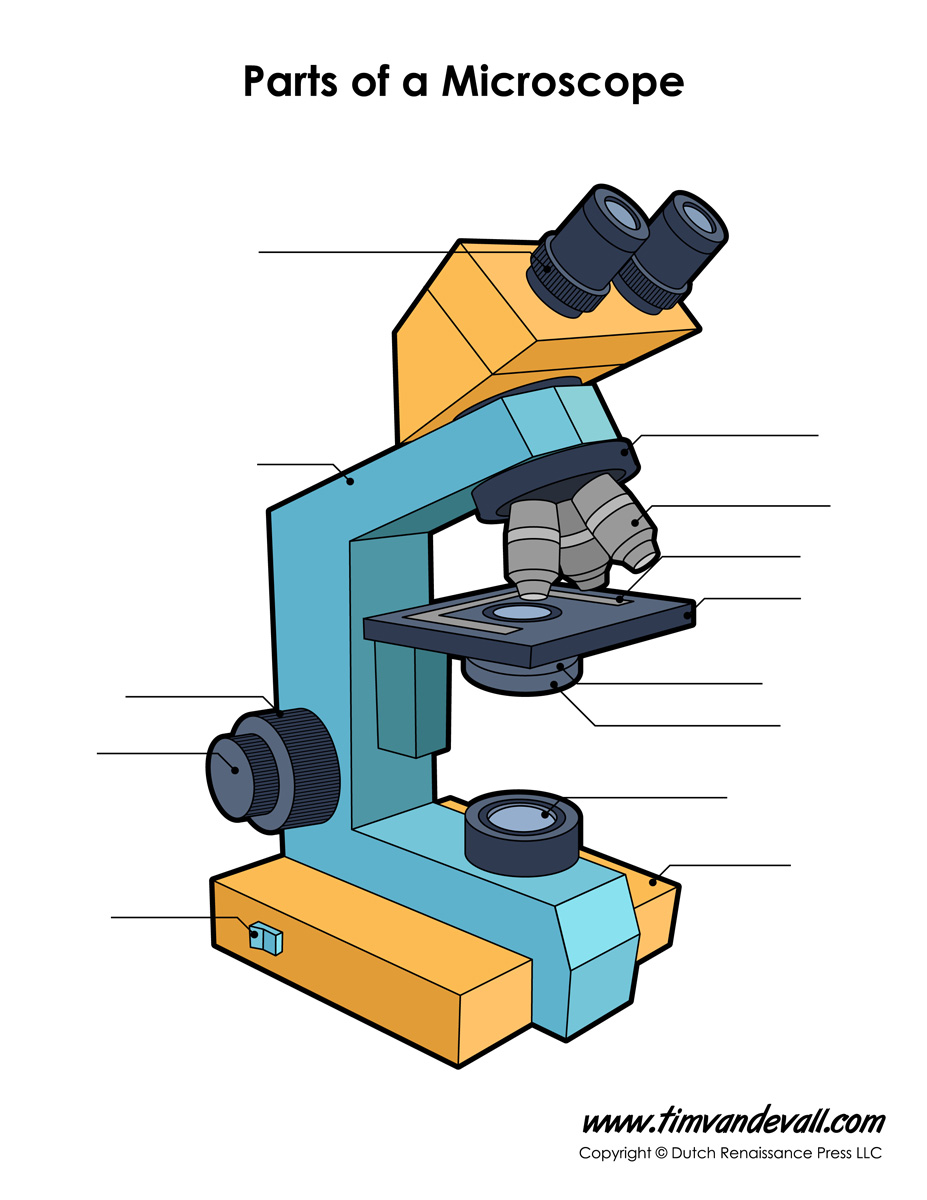

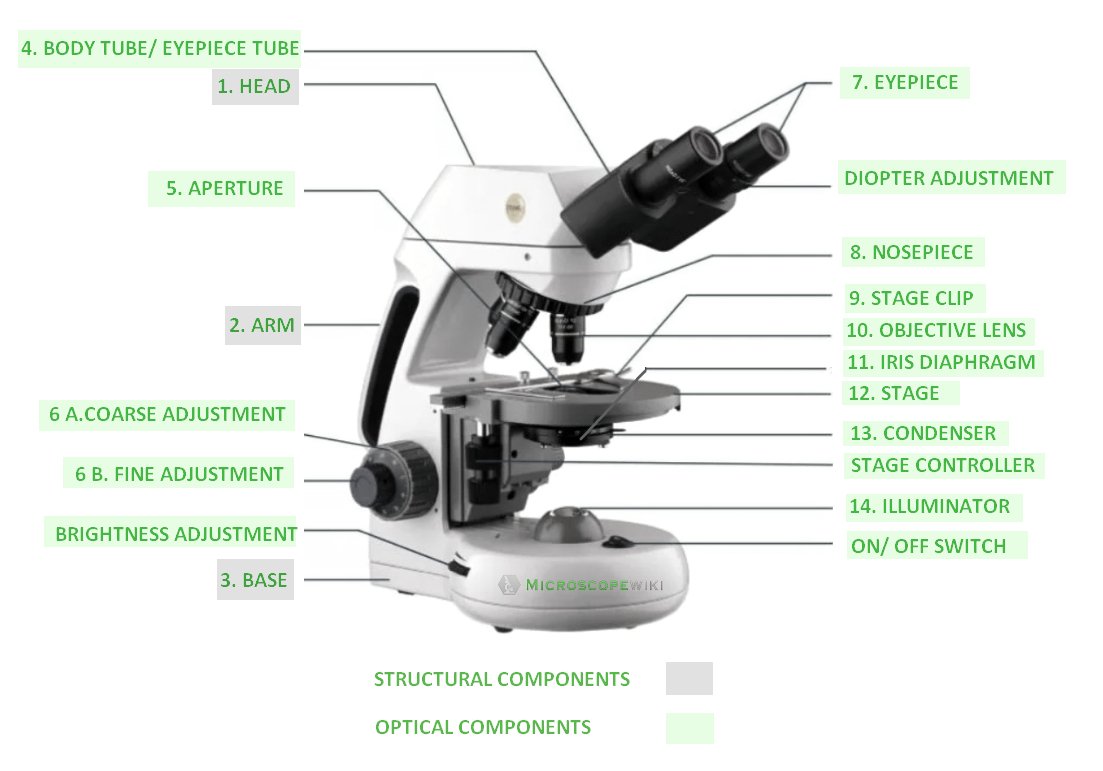




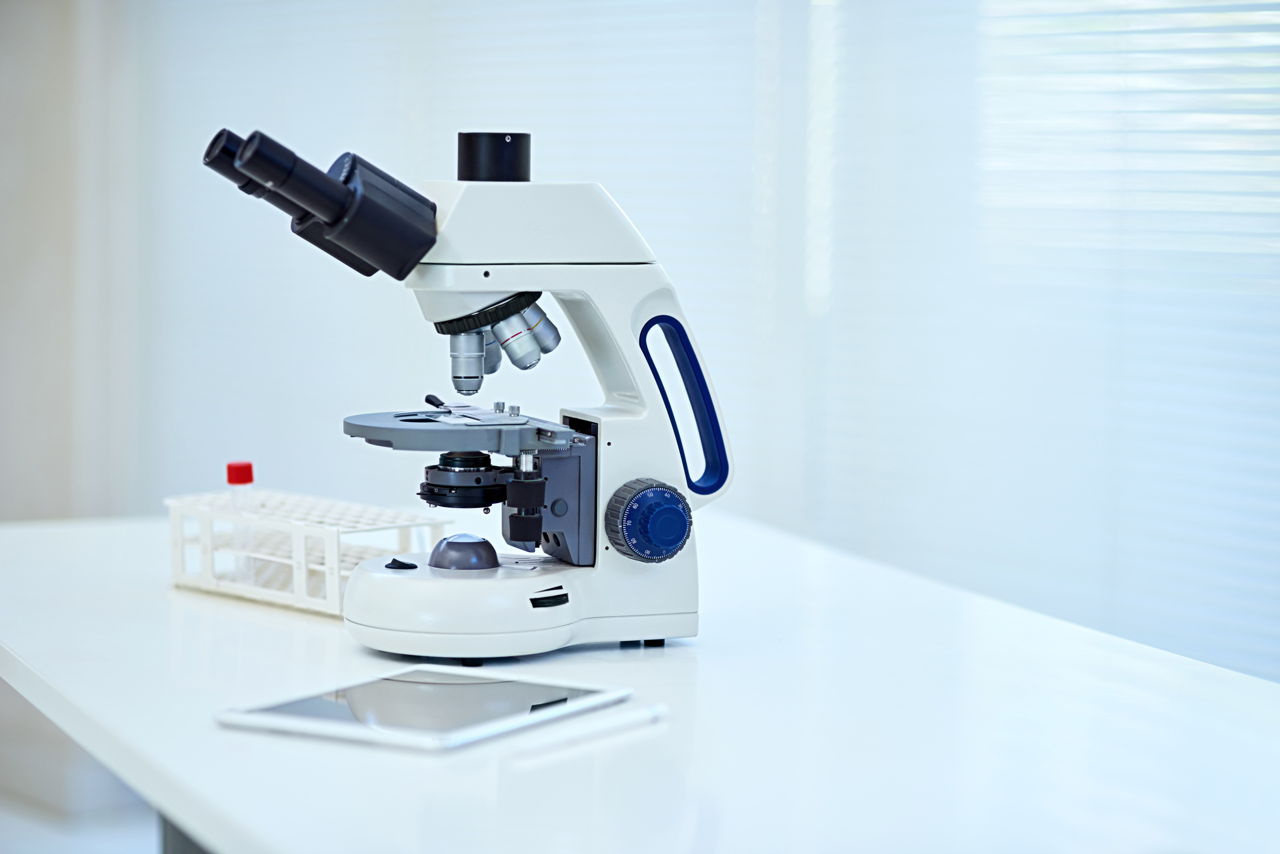

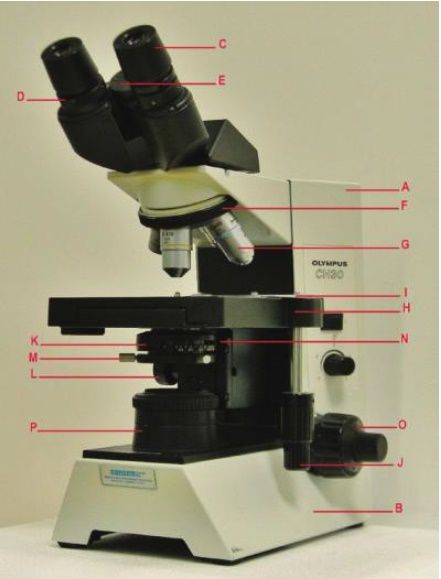
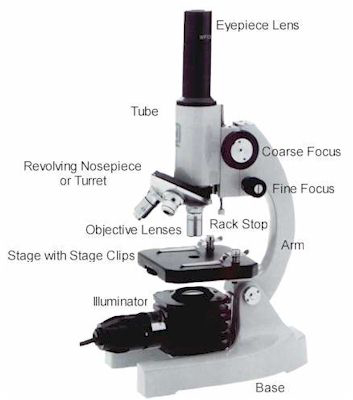

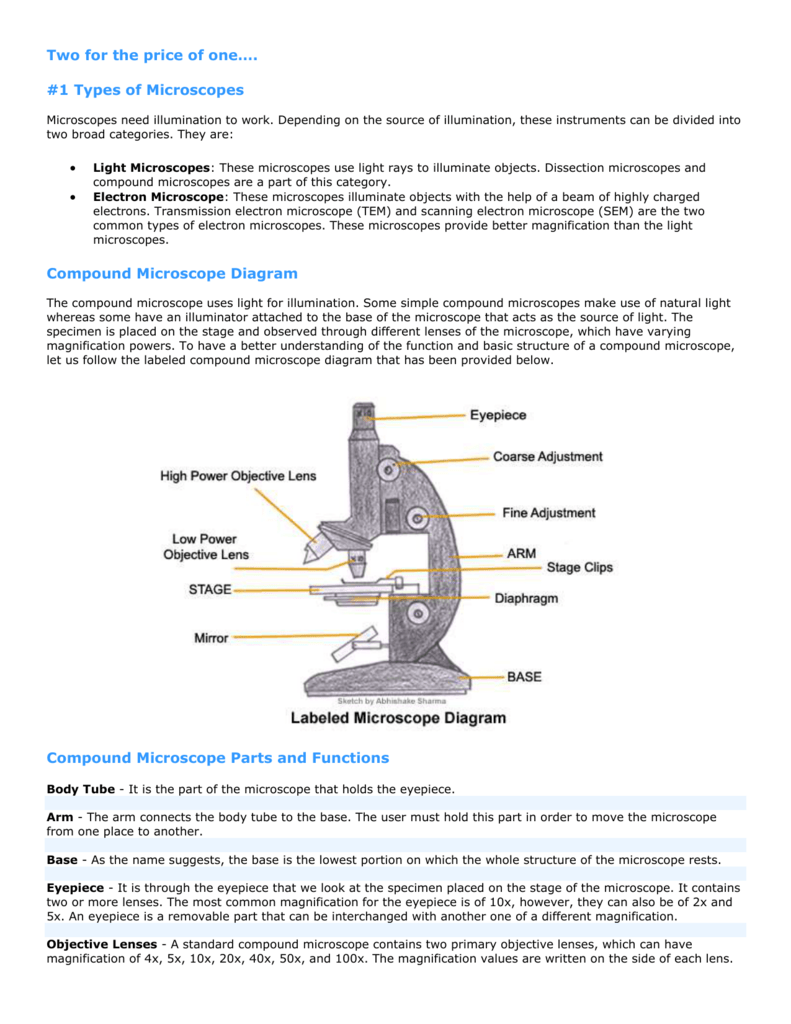





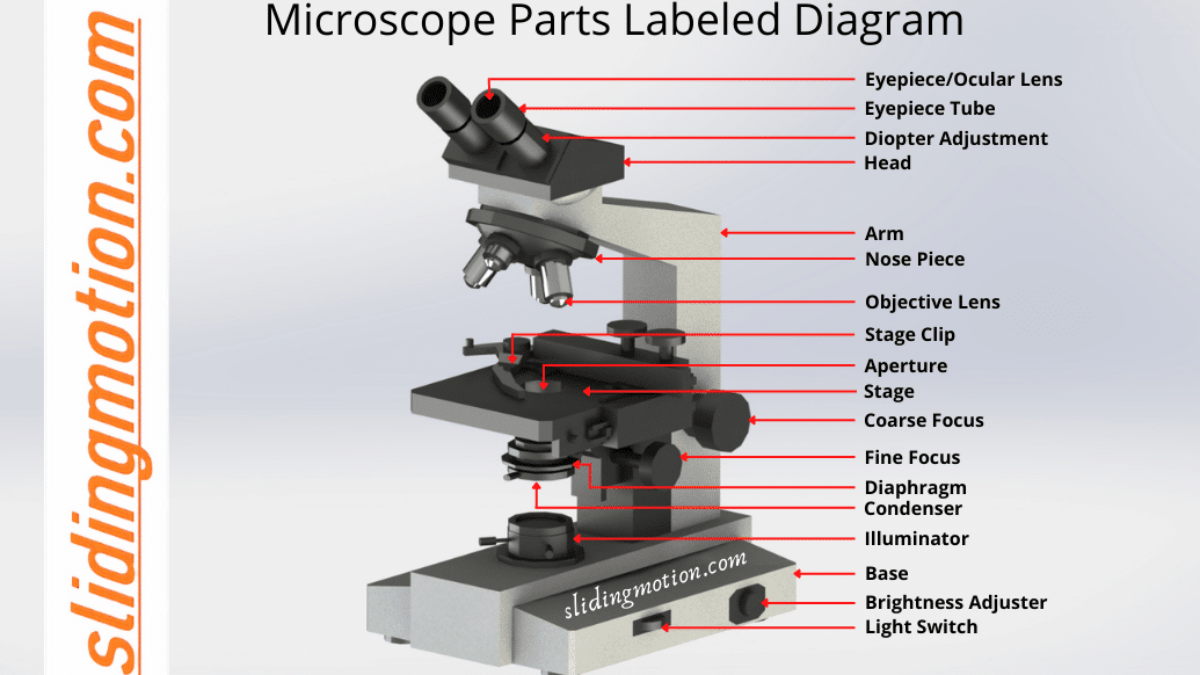
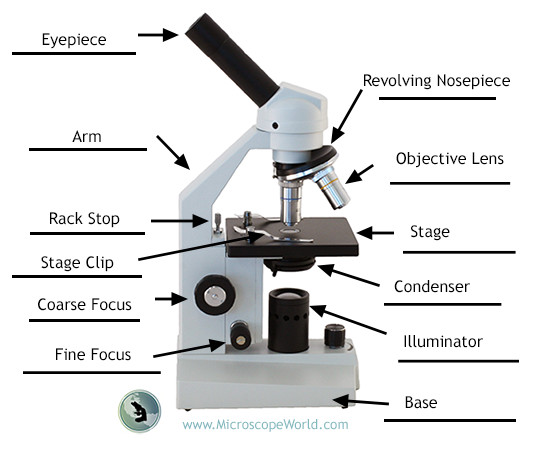

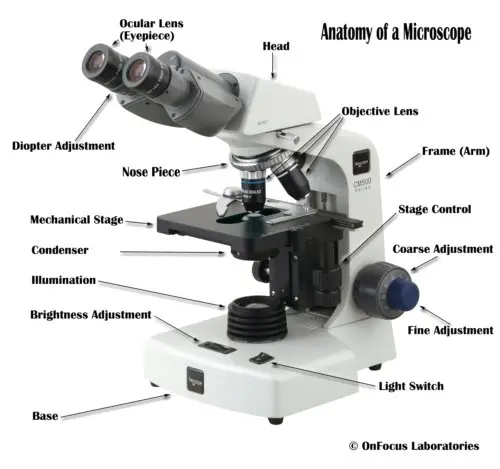

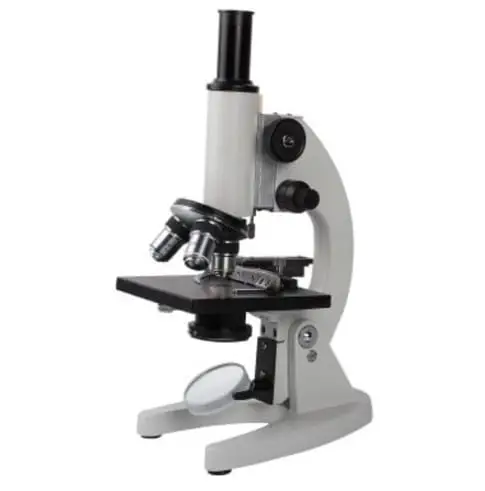




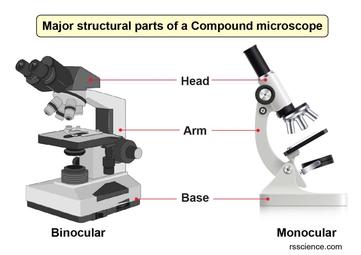
(159).jpg)
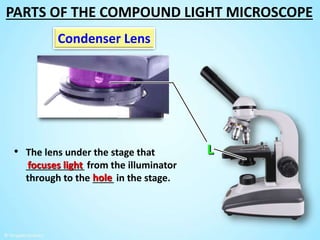



Post a Comment for "38 compound microscope parts name"